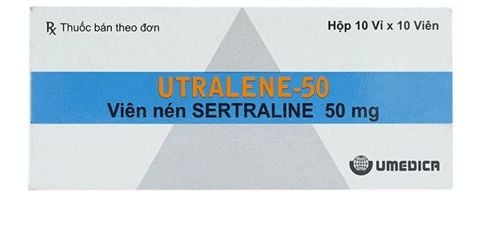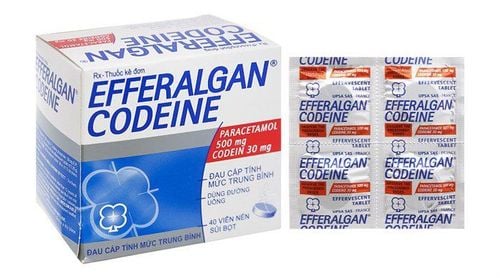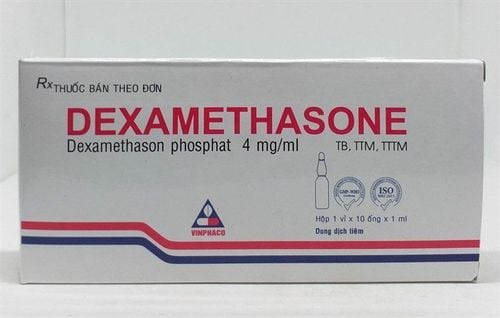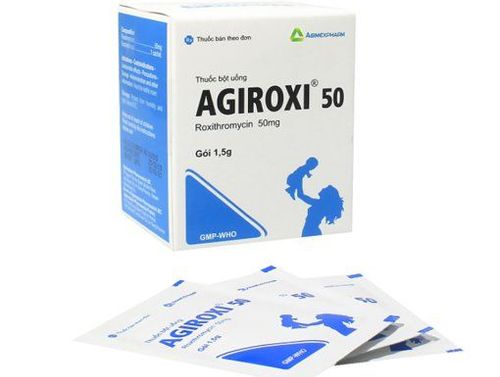This is an automatically translated article.
Sanseptol belongs to the group of drugs that treat parasites, infections, fungi, and viruses. With the main ingredient is Trimethoprim.Sulfamethoxazol. Let's learn more about the drug through the article below.1. Ingredients
Sanseptol drug includes the following ingredients:
Trimethoprim, Sulfamethoxazol: 400 mg Excipients just enough for 1 tablet (Excipients include: Pregelatinized starch, PVP croscarmellose Sodium, microcrystalline cellulose, magnesium stearate). Packing: Box of 1 blister of 20 tablets.
2. Uses of Sanseptol
Sanseptol is used in the treatment of a number of bacterial infections.Respiratory tract infections: Chronic bronchitis exacerbations. Acute pneumonia in children. Acute otitis media in children. Acute purulent sinusitis in adults. Urinary tract infections: Infectious prostatitis in men Uncomplicated lower urinary tract infections. Chronic, recurrent urinary tract infections in adult women. Pneumocystis carinii infection: Pneumocystis carinii pneumonia. Gastrointestinal infections: Bacillary dysentery. However, widespread drug resistance increased. This is the second-line drug in the treatment of typhoid.
3. Contraindications
Sanseptol is contraindicated in some of the following cases:
Patients with severe renal failure and plasma concentrations of the drug cannot be monitored. People with megaloblastic anemia due to folic acid deficiency. Hypersensitivity to sulphonamides or to trimethoprim. Children under 2 months old.
4. Dosage and usage
For adults and children over 12 years old: Take 2 times a day, 2 tablets each time with meals. In acute treatment can increase the dose. For children and patients with special treatment requirements: Use as directed by a physician.
5. Undesirable effects
When using the drug can occur some unwanted effects in 10% of patients. The most common adverse effects occurred in the gastrointestinal tract (5%) and some skin reactions occurred in at least 2% of patients using the drug: rash, acne. Side effects are usually mild, but sometimes very severe toxic skin syndromes that can be fatal, such as Lyell's syndrome. The active ingredient in the drug is Trimethoprim. Sulfamethoxazole is contraindicated in patients with confirmed megaloblastic anemia or those with severe liver disease, possibly toxic hepatitis.
Common side effects: Fever, nausea, vomiting, diarrhea, glossitis, rash. Uncommon side effects: Eosinophilia, leukopenia, neutropenia, urticaria, purpura. Rare side effects: Anaphylaxis, hemolytic anemia, serum sickness with megaloblastic anemia, thrombocytopenia, agranulocytosis and pancytopenia. More dangerous are aseptic meningitis, toxic epidermal necrolysis (Lyell syndrome), Stevens - Johnson syndrome. Erythema multiforme, angioedema, photosensitivity. Jaundice, cholestasis in the liver, liver necrosis. Hyperkalemia, hallucinations, hypoglycemia, renal failure, interstitial nephritis, kidney stones, tinnitus. When one of the above signs appears, you should notify your doctor immediately for timely treatment.
6. Drug interactions
Concomitant use of diuretics, especially thiazides, increases the risk of thrombocytopenia in the elderly. Sulfonamides can inhibit protein binding and renal excretion of methotrexate. Therefore, it will reduce the elimination and increase the effect of methotrexate.
When cotrimoxazole is used concomitantly with pyrimethamine 25mg/week, there is an increased risk of megaloblastic anemia. Active ingredient Cotrimoxazole inhibits the metabolism of phenytoin in the liver, potentially exaggerating the effects of phenytoin. Cotrimoxazole may also prolong the prothrombin time in patients taking warfarin.
7. Be careful when taking medicine
Care should be taken when using the drug for the elderly. Because kidney function may be impaired, vulnerable to folic acid deficiency such as elderly patients and long-term high doses of Sanseptol, dehydration, malnutrition.
Trimethoprim / Sulfamethoxazole can also cause hemolytic anemia in people with 6-6PD deficiency.
Note when using for pregnant and lactating women:
Sanseptol can cause jaundice in children in the perinatal period due to the removal of bilirubin from albumin. This is because trimethoprim and sulfamethoxazole can interfere with the metabolism of folic acid, which should be used during pregnancy only when clearly needed. In cases where it is necessary to take the drug during pregnancy, it is important to take additional folic acid and to consult your doctor before taking it. Women during lactation should not use Trimethoprim / Sulfamethoxazol, because infants are very sensitive to the toxic effects of the drug. Some special notes and warnings before using the drug:
When it is detected that the drug has mold, color change, it must not be used. Medicines that have expired 36 months from the date of manufacture printed on the package must not be used. Overdose and treatment:
Manifestations of overdosage: Headache, anorexia, nausea, vomiting, unconsciousness, dyschromia and jaundice are signs of overdosage, myelosuppression. Treatment: Induce vomiting, gastric lavage. Acidification of urine to increase elimination of trimethoprim. If there are signs of myelosuppression, the patient should take leucovorin (folinic acid) 5 - 15 mg/day until recovery of coloration.
Sanseptol medicine is only used under the prescription of a doctor, need to read the instructions for use carefully before using. If you need more information, please consult your doctor before taking the medicine.













